hair
very "sharp" compared to other parts of the body
hair
very "sharp" compared to other parts of the body
Excess charge on a nonuniform conductor becomes most concentrated at the location of greatest curvature.
We mentioned this in Session 7
surrounding material
i.e., air
close together
Plate width \(W\gg d\) the distance between plates. Normal batteries and capacitors rely on this limit.
Properties
More statements based on flux.
The mutual repulsion of excess positive charges on a spherical conductor distributes them uniformly on its surface. The resulting electric field is perpendicular to the surface and zero inside. Outside the conductor, the field is identical to that of a point charge at the center equal to the excess charge.
Yes, important when applied to wires in a circuit.
A conductor placed in an electric field will be polarized.
This is why the aluminum soda pop can rolled in Session 7 demonstration
Water is a strongly polar molecule.
Here is a better model than Fig. 2
 <script async src="//embedr.flickr.com/assets/client-code.js" charset="utf-8"></script>
<script async src="//embedr.flickr.com/assets/client-code.js" charset="utf-8"></script>
The movement of these ions through cell membranes is crucial to the motion of nerve impulses through nerve axons.
Membranes and batteries and capacitors have similar structure.
bonds
hydrogen bonds
it is the electrostatic force that not only holds the molecule together but gives the molecule structure and strength.
Mentioned in terms of complex organization, Session 7.
Sketch the electric field lines in the vicinity of two opposite charges, where the negative charge is three times greater in magnitude than the positive.
BANG! Another exercise I like.
Figure 8 shows the electric field lines near two charges and . What is the ratio of their magnitudes?
Yes, I like this exercise, too.
1: (a) Sketch the electric field lines near a point charge . (b) Do the same for a point charge
I like this exercise
Field lines can never cross
Another flux law
The direction of the electric field is tangent to the field line at any point in space
Useful for visually interpreting the curvature of field lines.
The strength of the field is proportional to the closeness of the field lines—more precisely, it is proportional to the number of lines per unit area perpendicular to the lines
also a flux law
not a physical entity in themselves
Although Michael Faraday at first DID think that field lines were physical. He called them lines of force.
The number of field lines leaving a positive charge or entering a negative charge is proportional to the magnitude of the charge
A flux law. If we were using calculus, there would be a huge calculus equation for this law, but the verbal form here is perfectly righteous and useful.
With the vector pointing rightward, it is effectively pointing at the center of the Nardo Ring — it is centripetal.
This statement and surrounding statements mentioned in HW 03.
This electric field strength is the same at any point 5.00 mm away from the charge that creates the field.
Spherical symmetry, very handy, though lots of trig is possible. All complicated fields, like the electric field of a charged metal plate in a battery, is built up of zillions of point charge fields (using calculus and trig for days).
The electric field is defined in such a manner that it represents only the charge creating it and is unique at every point in space.
Very important. This cannot be done with forces. Cf., Session 7
Coulomb’s law
We reviewed this in Session 5, 09/06
strands of hair to repel
Again, the conundrum of hands touching the generator but the strands of hair displaying the electrical effect.
observed charges
The author is being tricky here. QUarks are subatomic particles with partial charges, The up quark (u) has charge $$+\frac{2}{3}e$$ and the down quark (2) has fractional charge \(-\frac{1}{3}e\)
However, quarks are hard to pull out of a proton or neutron and have never been observed in isolation. *
Similarly, electrons have a combined charge of −1.00 coulomb.
$$6.25\times 10^{18}\text{ electrons}\longrightarrow -1.00\:Coulomb$$
cosmic rays
E.g., muons that form from cosmic rays. 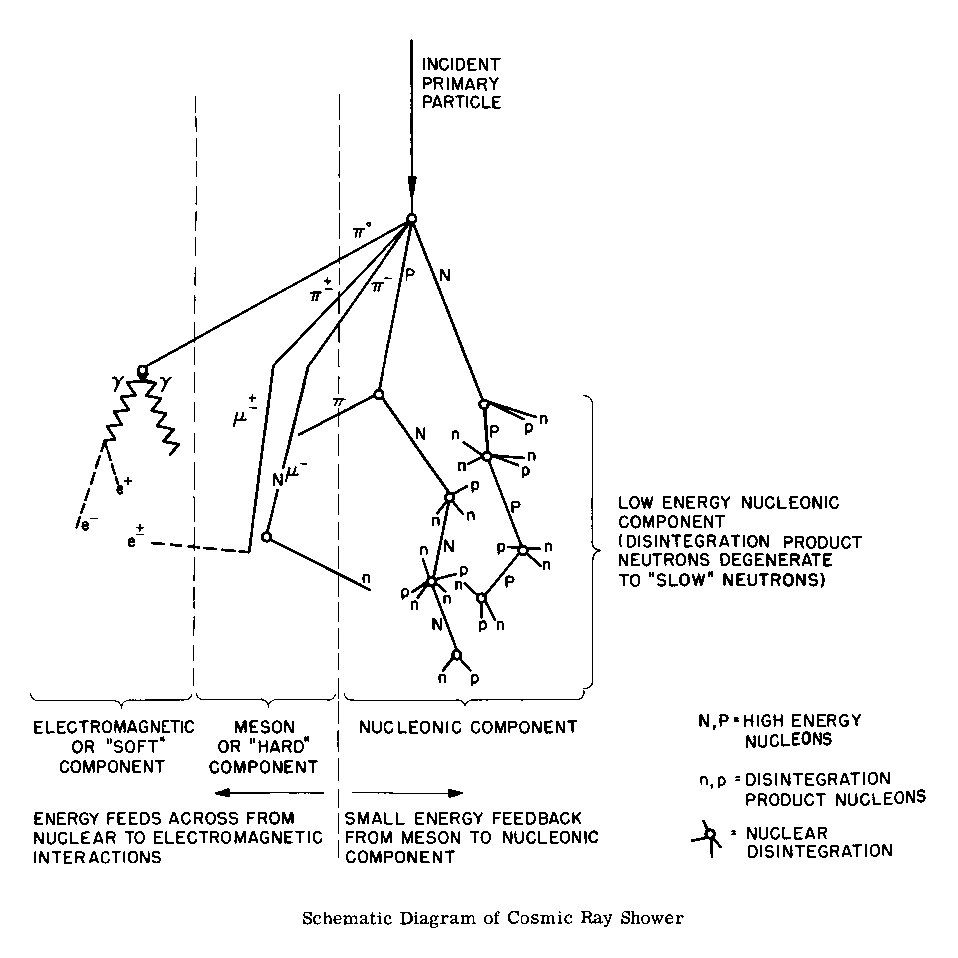
in equal amounts
i.e., neutral atoms, not ions
explore the nature of the force between charges.
The electromagnetic interaction is trickier than the gravitational interaction, because
For this reason, deciding the net electrical force on an electron or a proton, or an array of electrons or an array of protons, can be inticate, accounting-wise, because you have to account for
amber
The Greek word for amber is ήλεκτρο, from which we get the word electric, electron etc.
the weak nuclear force
Actually, we now have a great unifying theory for electromagnetic and weak nuclear interactions. It is called "electroweak theory." We won't be studying it, but it is out there. Here is something from Georgia State Hyperphysics You can take a peek at it, read around if it strikes your fancy.
The sliding motion stripped electrons away from the child’s body, leaving an excess of positive charges, which repel each other along each strand of hair.
If the sliding motion is the seat of this little kid's pant, then why do excess positive charges end up along each strand of hair?
We will understand this conundrum directly.
Stardust sample return mission
Very important investigation for us, the Stardust Mission.
Chemical Condensation Sequence in the Solar Nebula.
This diagram was first mentioned in the Getting Started Fall 2019 video in YouTube!
Figure 2. (a) We analyze two-dimensional projectile motion
Sneak preview on syllabus is related to this analysis. Study both. Acceleration
Comets generally have orbits of larger size and greater eccentricity
They are about the same to the nearest power of 10.
This is a horrible sentence.
When a scientist deals with huge numbers, as in astronomy, it is sometimes "close enough" if they have the same power of 10 in scientific notation.
So a better sentence would be this: \(\text{\color{blue}The mass of frozen water in the Mars polar cap }\)\(\text{\color{blue}is of the same order as the Greenland ice cap}.\)
One commonly hears egghead scientists saying that two quantities "are about the same order," and by that they mean the two quantities are righteous and equivalent.
The rovers (Spirit, Opportunity, and Curiosity)
Small but mighty, the good and faithful rovers that have sent us so much data about Mars.
Future missions will include the return of martian samples
The seasonal caps on Mars are composed not of ordinary snow but of frozen CO2 (dry ice).
polar cap area
Using \(\pi r^2\) for the area here is an underestimation, because \(\pi r^2\) is good for a flat circle, but the polar cap is not flat! It is curvature.
However, using \(\pi r^2\) is
no life was detected on Mars.
But the Viking landers still gave us a lot of good data on Mars.
together with a great deal of water ice.
We know this by looking for and measuring the infrared spectra of both \(H_2 O\) and \(CO_2\)
Testing this possibility, however unlikely, was one of the primary objectives of the Viking landers in 1976.
fossil life on Mars
Cf., the famous Martian meteorite, ALH-84001.

Mars seems to be the most promising place to look for life
Our pre-occupation with Mars, e.g., The War of the Worlds.
We know that the one requirement shared by all life on Earth is liquid water.
Astronomers' preoccupation with \(H_2 O\)
Underground water would be the most exciting possibility,
At a pressure of less than 0.006 bar, the boiling point is as low or lower than the freezing point, and water changes directly from solid to vapor without an intermediate liquid state (as does “dry ice,” carbon dioxide, on Earth).
Sublimation. Good comparison to what \(CO_2\) ice does here at the surface of Earth.
0.007 bar, less than 1% that of Earth.
Standard 1.00 atmosphere of pressure on Earth = 1.01325 bars, or, as they say on the Weather Channel, 1013.25 millibars. This is the atmospheric pressure on a day of fair weather at sea level. A similar fair day in Denver, one mile altitude, would be less than 1013.25 millibars.
Mars atmospheric pressure is 0.007 bar or 7 millibars.
For comparison: The central pressure of a hurricane is considered extremely dangerous if it gets to 900 millibars. E.g., Hurricane Irma hit the Florida Keys in 2017 at Category 4, 929 millibars central pressure. Very violent.
the runoff channels are probably older than the lunar maria, presumably about 4 billion years old.
Nice estimate based on cratering rate. SO... it has been a long time since Mars has had a wet climate.
Several types of clouds can form in the martian atmosphere.
We would consider the dust clouds of Mars or of Earth (like in the Sahara) as different from the \(H_2 O\) clouds, which are microdroplets of liquid water held aloft by rising air currents.
the sterilizing effect of this ultraviolet light.
the planet had a very different climate long ago.
The ratio of the distance between the foci to the length of the major axis is called the eccentricity of the ellipse.
$$e=\sqrt{1-\frac{b^2}{a^2}}$$
behavior of planets based on their paths through space.
"...based on their paths." This is bass ackward relative to, e.g., Ptolemy. For Ptolemy, he based everything on circles and forced everything into a complex system involving epicycles, deferents, equants etc. To some degree, Copernicus and Galileo were also stuck thinking "circles." Kepler, however, took the path that Nature showed him in Tycho's measurements -- especially Mars' ellipse -- and then figured out a pattern from that. And he figured out three patterns, actually.
observations
Observations can be refined but not ignored or contradicted!
The square of a planet’s orbital period is directly proportional to the cube of the semimajor axis of its orbit.
We now leverage Kepler's Third Law to use in any star system for which we can measure orbital distance, e.g., by parallax, and orbital periods. Black holes, which we cannot see, can reveal themselves in this way.
Tubingen
Still a great university in Germany!!
sum of the distance from two special points inside the ellipse to any point on the ellipse is always the same
Technical definition of ellipse, sounds rough... HOWEVER, it is the reason that the string method in Fig. 3 works. The length of the string is "always the same," if you are careful.
exploding star
A supernova, 1572. Cf., APOD 03/17/09
beyond the orbit of Pluto.
Pluto the dwarf planet has a semimajor axis about 39.482 AU. Its orbital period is about 248 years
occupied most of Kepler’s time for more than 20 years
What a career-length project!
Three years after the publication of Copernicus’ De Revolutionibus, Tycho Brahe was born
This shows the slowness of scientific development in those days.
parabola, and hyperbola
There are objects that pass through the solar system on parabolic and hyperbolic orbits,

 such as the mysterious A/2017 U1 'Oumuamua (YouTube of its trajectory)
such as the mysterious A/2017 U1 'Oumuamua (YouTube of its trajectory)
Note that the eccentricities of the planets’ orbits in our solar system are substantially less than shown here.
Correct. Comets and asteroids, however, do commonly have ellipticity of this level or more.
We wrap the ends of a loop of string
Cf.,"pin and string method" on YouTube.<br />
Kepler’s third law
A huge topic for us this entire semester.
The universe could be a bit more complex than the Greek philosophers had wanted it to be.
The scientific end of the celestial spheres, although celestial sphere is still a lovely image outside of science. : )
If the foci (or tacks) are moved to the same location, then the distance between the foci would be zero. This means that the eccentricity is zero and the ellipse is just a circle; thus, a circle can be called an ellipse of zero eccentricity. In a circle, the semimajor axis would be the radius.
Good to keep in mind: a circle is just a specially symmetric case of an ellipse, \(e=0\)
Kepler Helps Weigh the Galaxy
As previously stated, Kepler's Third Law is EVERYWHERE!!!!
: )
In science, what seems to be a reasonable assumption can later turn out to be wrong
Scientists must always be humble about their findings
objects orbiting at large distances from a massive object will move more slowly than objects that are closer to that central mass.
E.g., a comet really moving fast at perihelion and slowing down at aphelion. E.g., Uranus and Neptune. Nearly the same mass, but orbital semimajor axes 19.2 AU for Uranus and 30 AU for Neptune; their orbital "years" are 84 years for Uranus but 164 years for Neptune.
the Galaxy is roughly spherical
Physicists are always making assumptions like this, spherical galaxy, spherical planet, spherical this, spherical that. There is even a nerdish physics joke for which the punch line is, "Consider a spherical cow."
Physics humor. :\
Anyway, physicists do this to make things easier at the start, then they make more detailed, intricate models, as things progress
Understanding the nature of this dark matter is one of the great challenges of astronomy today;
should
Yeah, what they SHOULD do.... ain't necessarily so.
indicating a great deal of mass beyond the Sun’s orbit.
...the sign of "dark matter"
Stay tuned
least 2 × 1012MSun, which is about twenty times greater than the amount of luminous matter.
TWENTY TIMES!!!! Holy Toledo! Visible matter is like a drip from a Slurpee!

basic approach
only about 20 galactic years have passed.
heir orbital velocities are even greater than the Sun’s
This would be like Neptune orbiting faster than Earth!!!
rotation curve
Galactic rotation curves fail, which is the sign of dark matter.
If the gravity were supplied by stars or by something else that gives off radiation, we should have spotted this additional outer material long ago.
Rotation Curve of the Galaxy
There is a ton of fancy calculus behind the blue part of the graph. So the theory literally falls short of observations (red)
Little did we suspect how wrong our assumption was.
If the Galaxy had only the mass calculated by Kepler, then the high-speed outer objects should long ago have escaped the grip of the Milky Way.
We call the period of the Sun’s revolution the galactic year.
the nearer a planet is to the Sun, the greater its orbital speed.
Sir Isaac Newton figured out why this is true, in his theory of universal gravitation -- which is a few chapters ahead.
clumsy and lacking the beauty and symmetry of its successor.
Symmetry is a powerful tool, because it is not subjective -- it can be expressed mathematically. E.g., the symmetry of positive and negative numbers relative to zero, whereby \(\left( -2 \right)^2 = \left( 2\right)^2\) and both \(=4\)
still taught at Harvard University
but not at UCF, of course!! ;)
phases of Venus
This animation (http://tiny.cc/88cyqy) shows the phases of Venus. You can also see its distance from Earth as it orbits the Sun. The Astronomy Picture of the Day has an animation of Venus https://apod.nasa.gov/apod/ap060110.html (http://tiny.cc/vadyqy) and a set of images of Venus as viewed from Earth. https://apod.nasa.gov/apod/ap170317.html (http://tiny.cc/ebdyqy)
Cool animations!
heavenly bodies must be made up of combinations of uniform circular motions.
It was left to Johannes Kepler to break this concept.
His great contribution to science was a critical reappraisal of the existing theories of planetary motion and the development of a new Sun-centered, or heliocentric, model of the solar system.
Good description, in a nutshell, for Copernicus' contribution
predictions
YES! This is what scientists want to do: predict the position of a previously unseen planet like Neptune, predict the landing place of a spacecraft sent to Mars, etc.
simple experiment dropping two balls of different weights
I.e., Galileo's famous experiment at the leaning tower of Pisa!
.JPG)
We can use Kepler’s law (see Orbits and Gravity) and our knowledge of the visible star to measure the mass of the invisible member of the pair.
One short sentence, but powerful. Thank you, Professor Kepler!
Calculating the Effects of Gravity
Bypass this calculation until end of the semester.
Heat escaping from the interior provides energy for the formation of our planet’s mountains, valleys, volcanoes, and even the continents and ocean basins themselves.
Main source of forces and motion = convection. Huge blobs of molten lava convect from core to surface, like water boiling in a pot on the stove or a thunderstorm convecting water vapor and liquid water in the atmosphere.
rework the surface of our planet constantly
Unlike some moons and planets which are geologically dead. Good example of dead geologically is our moon.
common sandstones, shales, and limestones
Consider, for example, the layers of sedimentary rocks in the Grand Canyon.
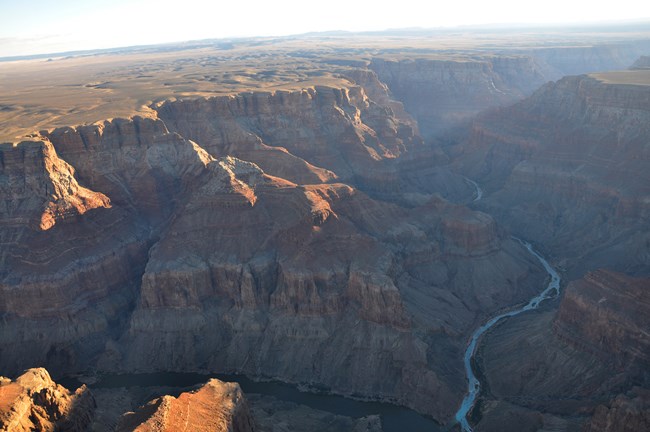
This is the way many, but not all, of the mountain ranges on Earth were formed.
Another example: the Himalayas. They formed when the subcontinent of India bashed northward into Eurasia.
It is a cooling system for the planet.
Convection!!
A block of quartzite on Earth is composed of materials that have gone through all four of these states.
The power to move the plates is provided by slow convection of the mantle
To find primitive rock, we must look to smaller objects such as comets, asteroids, and small planetary moons
Yup -- asteroids and comets are chunks of history going all the way back.
white
or pinkish up in Georgia!!!!
Jupiter’s moon Io
We will have a lot to say about Io.
Volcanoes
There are tons of volcanoes in the solar system. The largest volcano we know of is on Mars!!
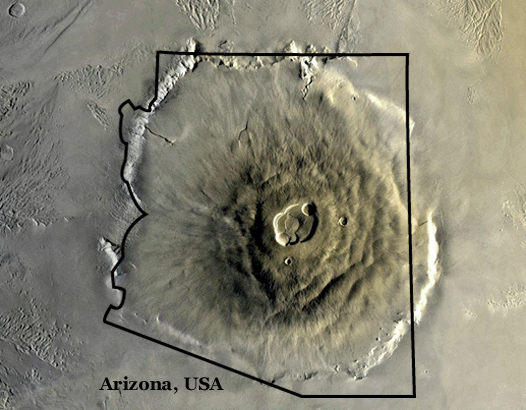
astronomy exams
Hmmmm...

We now know that this relationship holds for every galaxy except a few of the nearest ones.
f we then put this speed and the Hubble constant into Hubble’s law equation, we can solve for the distance.
Or, more simply, read it off the diagram.
When Hubble laid his own distance estimates next to measurements of the recession velocities (the speed with which the galaxies were moving away), he found something stunning: there was a relationship between distance and velocity for galaxies. The more distant the galaxy, the faster it was receding from us.
There is a legend about this, that this relation came to Hubble as he drove down to Pasadena after a night's observing. He pulled his car over on the shoulder and stopped to think. It is a twisty mountain road; I have driven it myself. At some time later, hours later as the legend goes, a traffic cop pulled alongside to check him out. All was well -- he was just thinking of what it all meant, that the entire universe was expanding. Edwin Hubble was probably very late for his breakfast, and we still ponder this meaning today.
No one at the time quite knew what to make of this discovery.
Hubble figured it out.

Humason was collaborating with Hubble by photographing the spectra of faint galaxies
They were especially looking at the near-ultraviolet H and K lines of calcium, $$\lambda_H=396.8\:nm\longrightarrow\text{toward red, longer wavelengths}$$
$$\lambda_K=393.4\:nm\longrightarrow\text{also toward red, longer wavelengths}$$
Here is an image of the sun in a filter that only transmits the Ca K line, very purply blue.
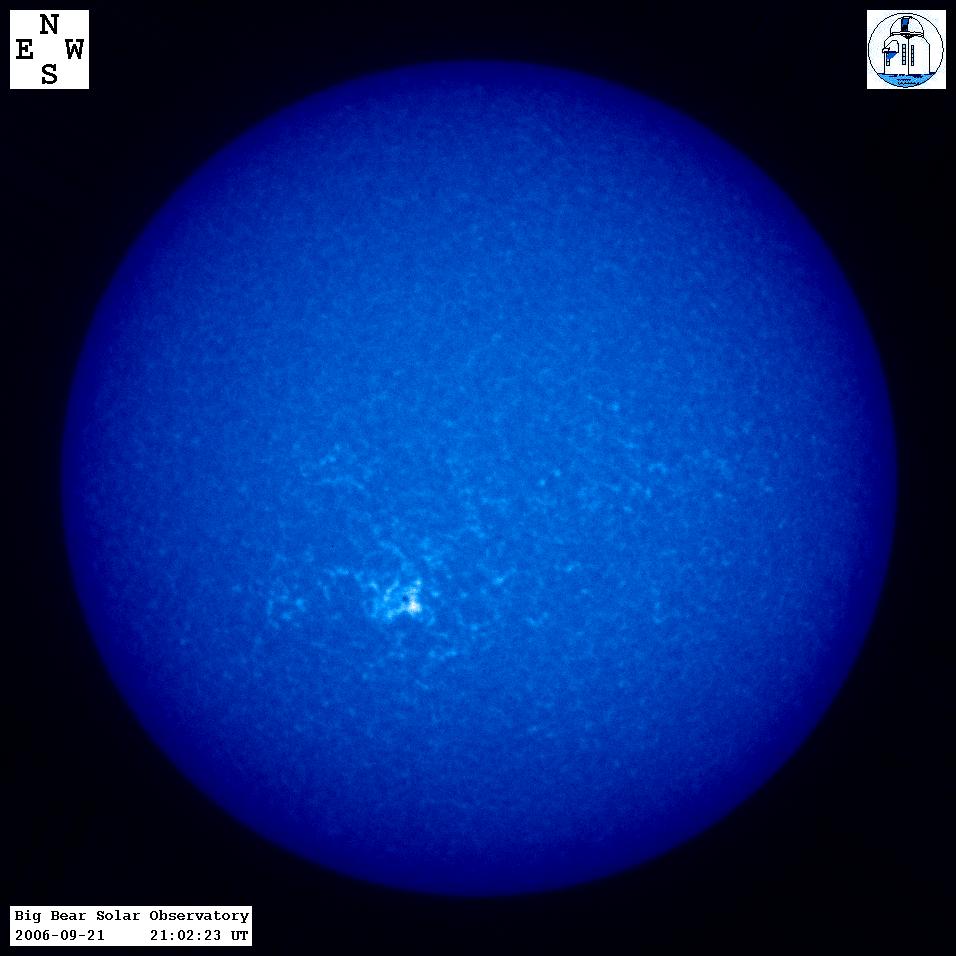
So a galaxy's K line will be less purply blue, maybe an aqua blue or even green... i.e., shifted toward the red end of the Roy G. Biv spectrum
Basically, if we can obtain a spectrum of a galaxy, we can immediately tell how far away it is.
Yes, definitely handy, because if we make a big telescope we can see and catch spectra of really distant, faint galaxies!
E.g., from Kirshner, PNAS, 2004,

spectra of galaxies contained a wealth of information about the composition of the galaxy and the velocities of these great star systems.
How it was discovered
Geologists estimate that about half of Earth’s current internal heat budget comes from the decay of radioactive isotopes in its interior.
Which helps keep lava in its molten state!
Uranium-238 Lead-206 4.47 Potassium-40 Argon-40 1.31
This graph
Excellent graph and caption, visual definition of half life.
snow
For Florida students, this term, snow, indicates a rare solid form of \(H_2 O\) which,at low temperatures, forms six-sided crystals that are very cold and fall from the upper atmosphere. Rare in Florida since the last Ice Age.

Scientists measure the age of rocks using the properties of natural radioactivity.
Using the idea of "radioactive half-life" of an element.
This composite image of the Moon’s surface
Compared to Earth, where impact craters are rare, the Moon is loaded with craters. That is because Earth has weather, volcanoes, earthquakes and continental drift.
emission of particles such as electrons
Like radioactive carbon-14 \(^{14}C\) spontaneously emitting an electron from its nucleus to become nitrogen-14 \(^{14} N\) which is stable. Most nitrogen, 99.632%, is nitrogen-14.
if we have a very large number of radioactive atoms of one type (say, uranium), there is a specific time period, called its half-life, during which the chances are fifty-fifty that decay will occur for any of the nuclei.
A lovely definition of half-life!
5 kilometers per second
"only" 11,000 mph!
whip through the inner parts of their orbits
...where they are also heated up by the sun and become visible.
48 kilometers per second
about 107,000 mph!!
Two points in any orbit in our solar system have been given special names.
Important vocabulary terms: aphelion and perihelion.
perigee and apogee
Similar to aphelion and perihelion but relative to Earth. You hear the guys at Mission Control in Houston talk about perigee and apogee. E.g., the ISS right now has perigee of 408 km altitude, apogee of 410 km altitude.
The average orbital data for the planets
I usually use NASA's Planetary Fact Sheet. All sorts of neat data.
Both asteroids and comets are believed to be small chunks of material left over from the formation process of the solar system.
Unlike the surface rocks most places on Earth. E.g., the Florida limestone bedrock which, in its oldest layers, is about 35 million years, less than 1% of the age of the solar system.
Halley
Not labeled well, but compare to the Mini-Lecture A in YouTube.
the wavelength emitted by the source
This means, as emitted by the source if it were in a stationary laboratory.
\(\Delta \lambda=\left(\lambda_{lab}-\lambda_{observed}\right)\)
So \(\frac{\Delta \lambda}{\lambda}\) is the percent change in wavelength.
Similar expressions exist for frequencies \(f_{lab}\) and \(f_{observer}\)
The variable v is counted as positive if the velocity is one of recession, and negative if it is one of approach. Solving this equation for the velocity, we find
We will tackle this kind of calculation in Module 3 when we study galaxies.
wavelength gets longer, we call the change in colors a redshift.
656.6 nm
So \(\Delta \lambda = 0.3 nm\) which is in the numerator of the equation below.
describe changes in the wavelengths of radio waves or X-rays
So a radio wave that has a smaller frequency than normal is redshifted. An xray wave with a higher frequency is blueshifted... all of this even though we do not perceive radio or xray as having color.
Check Your Learning
Another redshift.
Solving this equation for the velocity
This is also the equation programmed into a policeman's radar gun, for measuring the speed \(v\) of speeders.
radial velocity motion toward or away from the observer; the component of relative velocity that lies in the line of sight
For particular absorption or emission lines
Like the beautiful red \(H_{\alpha}\) line, for which the lab wavelength is \(\lambda=656.27\) nanometers.
As wavelength decreases, they shift toward the blue end of the spectrum
The wavelengths of the absorption lines can be measured accurately, however, and their Doppler shift is relatively simple to detect.
absorption OR emission lines can display redshift and blueshift
supermassive black holes by astronomers, to indicate that the mass they contain is far greater than that of the typical black hole created by the death of a single star.
Definition of supermassive black hole. Some galaxies' central black hole is even larger than ours.
supernova remnants
SNR
0.13 light-year
This is about 8000 AU, so much larger than our solar system, way past Neptune, out into the Oort Cloud. But comets from the Oort Cloud have orbital periods on the order of 200,000 years or so. But the stars in this image take a few decades!! Extremely fast, because gravity is so strong, due to Sgr A*
It appears that the monster black hole at the center of our Galaxy is not finished “eating.” At the present time, we observe clouds of gas and dust falling into the galactic center at the rate of about 1 MSun per thousand years.
These stars have now been observed for almost two decades,
First one with a good orbital track was S2, on a 15.2 year orbit about the black hole Sgr A*. 
Cf., Schödel R. et al., "A star in a 15.2-year orbit around the supermassive black hole at the centre of the Milky Way" Nature 419, 694–696 (2002),
temperature of 10 million K.
Very hot. How was it heated to this temperature?
Very Large Array (VLA) of radio telescopes in Socorro, New Mexico.
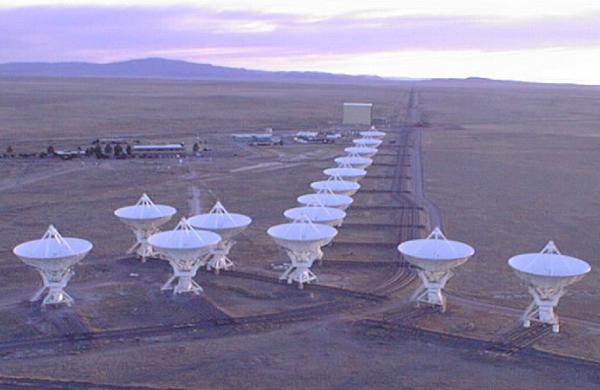
the evidence for a supermassive black hole at the center of the Galaxy is convincing indeed.
most important discoveries was the verification of water ice
Astronomers are always looking for signs of water on planets, comets, asteroids, moons and on exoplanets.
resulting Doppler shift
Here is a freight train blowing its horn as it passes the rail fan's video camera. At about 0:39, the horn shifts from a high note (while approaching) to a lower note (while moving away from the camera).
This is a Doppler Shift for sound waves.
Electromagnetic waves -- radar, visible light, even xrays -- also experience Doppler shifting. It is how the sheriff's deputy nabs speeders with his radar gun, and it is how we can measure velocities toward or away from Earth.
mass
Using Kepler's third law and a radar rangefinder to actually get the orbit.
radar-bright water ice
This means that water ice has a relatively high radar reflectivity. It does not dissipate the incoming radar beam, but bounces back a lot: strong return signal, "bright."
silicates
Sand is a silicate mineral -- most white sands are principally silicon dioxide \(Si\:O_2\).
its orbit has the high eccentricity of 0.206, Mercury’s actual distance from the Sun varies from 46 million kilometers at perihelion to 70 million kilometers at aphelion
Here is a set of diagrams that show the aphelion and perihelion in true proportion,

but wrong about where the Sun lies within the disk.
“dreamed”
most of the stars they could see lay in a flattened structure encircling the sky
previously hidden bulge of old stars that surrounds the center of our Galaxy
our Glaxy is not unique in its characteristics. There are many other flat, spiral-shaped islands of stars, gas, and dust in the universe.
Helpful for comparisons.
band standing in formation during halftime at a football game
E.g., 
Once the light pollution subsides to negligible levels, the Milky Way can be readily spotted arching over the sky on clear, moonless nights.
E.g., Clearwater Lake Recreation Area, up in Ocala National Forest, about 31 miles northwest of UCF.
You could do a much better job from a helicopter flying over the city than you could if you were standing in Times Square.
A good analogy.
concentrated into a central bar and a series of spiral arms
Probing the Atom
Skim this section for basic information about the discovery of the structure of atoms. Prior to Rutherford, we though atoms were just blobs of something sprinkled with electrons.
The Bohr Atom
Skim this section, because it relates to discrete spectra, one of our important tools in astronomy.
The Atomic Nucleus
Study this section carefully: Basic info for using isotopes
The number of neutrons is not necessarily the same for all atoms of a given element.
Conceptual definition of isotope. It is the number of protons that defines which element you have, but the nucleus can have any amount of neutrons it can hold onto.
The type of element is determined by the number of protons in the nucleus of the atom
IMPORTANT definition!!!!
They are also shown much closer than they would actually be
This is the remarkable fact about atoms: they are mostly empty space! Makes a person think.
isotopes1 of oxygen
nearly circular orbit our Moon occupies today.
$$e=0.055$$
Cf., the NASA Space Science Data Center planetary fact sheet.
potential solutions to most of the major problems raised by the chemistry of the Moon
Important parts of the theory, though it is not yet a stone cold lock.
major isotopes1 of oxygen,
Cf., lecture 8, Spring '18
Moon is both tantalizingly similar to Earth and frustratingly different.
Yes, as the moon rocks from Apollo show. They have been analyzed for decades and compared to terrestrial rocks.
Figure 2.
Milky Way Galaxy as it would look from above
The concentration of matter in the arms exerts sufficient gravitational force to keep the arms together over long periods of time
Big result, very tough to calculate.
show that a great deal of interesting chemistry must have taken place when the solar system was forming.
Such a fall occurs when a single larger object breaks up during its violent passage through the atmosphere
Excellent example is the Allende meteorite, which fell as a larger object that broke up, down in Mexico, on Feb. 8, 1969.

with the different materials sorted according to density.
like what a centrifuge does.

Some Striking Meteorites
Cool!
This value (which we round off to 4.5 billion years in this book) is taken to represent the age of the solar system
Isotopes tell us this age!
The most remarkable thing about these organic molecules is that they include equal numbers with right-handed and left-handed molecular symmetry.
This is a huge mystery, the handedness of sugars and amino acids.
do not appear to come from the comets
Comets are an entire other subject!!
The Formation of the Galaxy
Pretty technical -- we will bypass this section, too.
If we know the distance to a galaxy, we can convert how bright the galaxy appears to us in the sky into its true luminosity
For stars and galaxies, apparent luminosity (what we see on Earth) depends on its distance and its intrinsic luminosity (as measured at the galaxy or star itself).
If every light bulb in a huge auditorium is a standard 100-watt bulb, then bulbs that look brighter to us must be closer, whereas those that look dimmer must be farther away.
they could measure distances using certain kinds of intrinsically luminous variable stars, such as cepheids
Handy cepheid variable stars!
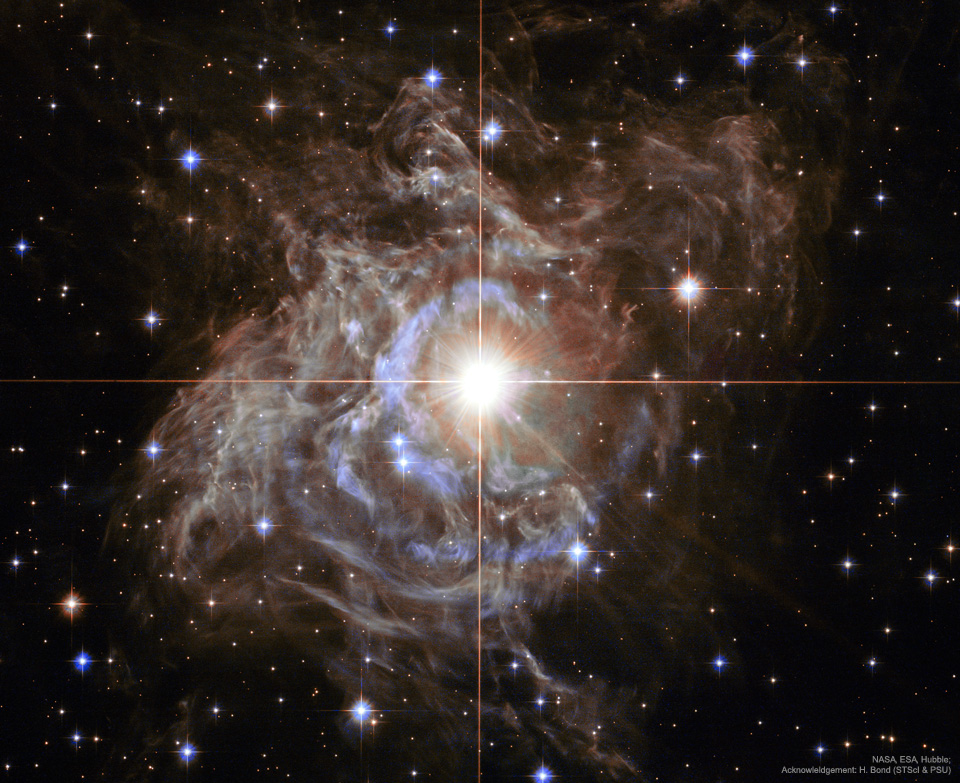
cepheid variables
type Ia supernovae
(credit: NASA, ESA, A. Riess (STScI))
I cannot find the original image on NASA servers. However, this image from 2014 is helpful for visualizing a Type Ia supernova:
 Image: Katzman Automated Imaging Telescope/LOSS
Image: Katzman Automated Imaging Telescope/LOSS
"Type Ia supernovae have acquired global importance in recent years through their use as distance indicators..."
The Discovery of Neptune
We will discuss this after Exam 1.
his friend Edmund Halley
What a fruitful friendship!
In this simplified model of a hydrogen atom
A very important diagram to keep in mind for most topics this semester, because most of the information about the stars and galaxies of the universe comes to us from starlight and its spectral lines!
Stellar Populations
Interesting but we will bypass this section.